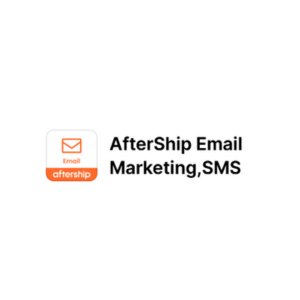
Easy-to-use marketing platform to grow, engage, and convert your eCommerce audience with email and automation tools.

eCommerce email marketing platform that automates newsletters and behavior-based flows

Supercharge your sales with smart, automated marketing made effortless for your online store.

Automate your marketing, boost sales, and build lasting customer relationships—all in one powerful, easy-to-use platform.

Mass‑mailing platform that helps businesses send high-volume campaigns with ease and high inbox deliverability.
What are Email Marketing tools for eCommerce?
The decision you have to make here is: Do you just want an email provider to send emails or do you want an omnichannel Customer Relationship Management (CRM) platform, or you could be thinking even bigger a "Customer Data Platform" or CDP. These terms are often intertwined, as we discuss in depth in our article on the Best Email Marketing Tools for eCommerce.
More than likely, what most early stage and mid-market merchants are looking for is going to be a tool that has all the automations and segmentations you could need to get up to email marketing best practices. Including your abandoned cart, abandoned checkout, post-purchase, and retention flows. Then you may also want a tool that works on more than one channel, perhaps bring in SMS (almost always my recommendation for merchants not currently using SMS). Maybe web push as well. It depends on your bandwidth and stage of business.
Finally and most importantly, you need a tool that has a native Shopify integration so that you can ensure it is triggering the automations appropriately. Without this you could be missing up to 80% of your abandoned cart opportunities, yikes.
Why use Email Marketing software?
Email marketing is defacto for all eCommerce merchants. Even those who prefer SMS or another channel as a primary communication point, you still need to be sending transactional emails such as order receipts as a bare minimum. You need your abandoned cart automations in place, welcome sequence, post-purchase sequence, and perhaps at least half a dozen other email automations up and running to ensure you're up to eCommerce best practices on this channel. And nowadays most email tools double as customer relationship management tools - which means you can also use these tools to better understand the customer journey, create segments of your audience, and even push those segments to Google and Facebook for targeted advertising.
When should you invest in Email Marketing software?
You need to have some email marketing automations going on from the beginning of your store. As you grow, the segmentations get more robust, you get to add in more sequences, you may launch a newsletter, you may find new ways to collect email addresses, and you may incorporate other channels. But at all stages of any successful eCommerce business, there will be email marketing, lots and lots of email marketing.
No ifs, ands, or buts, you must be doing email marketing and especially triggered automations around customer actions.
Who in your team is managing Email Marketing software?
Typically your head of marketing, email marketing manager, or you as the founder are handling this channel. It requires a lot of creativity, concise copywriting, and sometimes a little bit of a data nerd, to get everything just right and maximize your conversions from this channel.
What are the most important features to consider when buying Email Marketing software?
Email Service Providers (ESPs) should all allow for some form of automation, but the one automation you want to make sure you have down pat is the abandoned cart automation - and this starts by collecting more email addresses up front, typically with a pop-up or slide out, and typically that has some sort of first purchase offer like "10% off your first purchase." The real trick here is making sure that the email collected is tied to the users browsing experience so that after they give their email, you can see them visit a product detail page, add to cart, and then possibly abandon that cart. If your ESP can't see the abandon, then it will not trigger the email, which will mean you're leaving sales on the table.
Other than abandoned cart sequences, you want a platform that can segment users into various lists, track revenue alongside their on-site behavior - which means a robust integration with your eCommerce platform (Shopify, WooCommerce, whatever yours is...). You want a solid view of the individual customer journey. You probably want deep integrations with other tools such as Google and Facebook for sending segments into ad campaigns. You may want the tool to offer more than just email, such as SMS, Messenger, Push notifications, and more. And some ESPs are now getting into handling on-site personalization, since in-email personalization is so powerful.










.png)
.png)